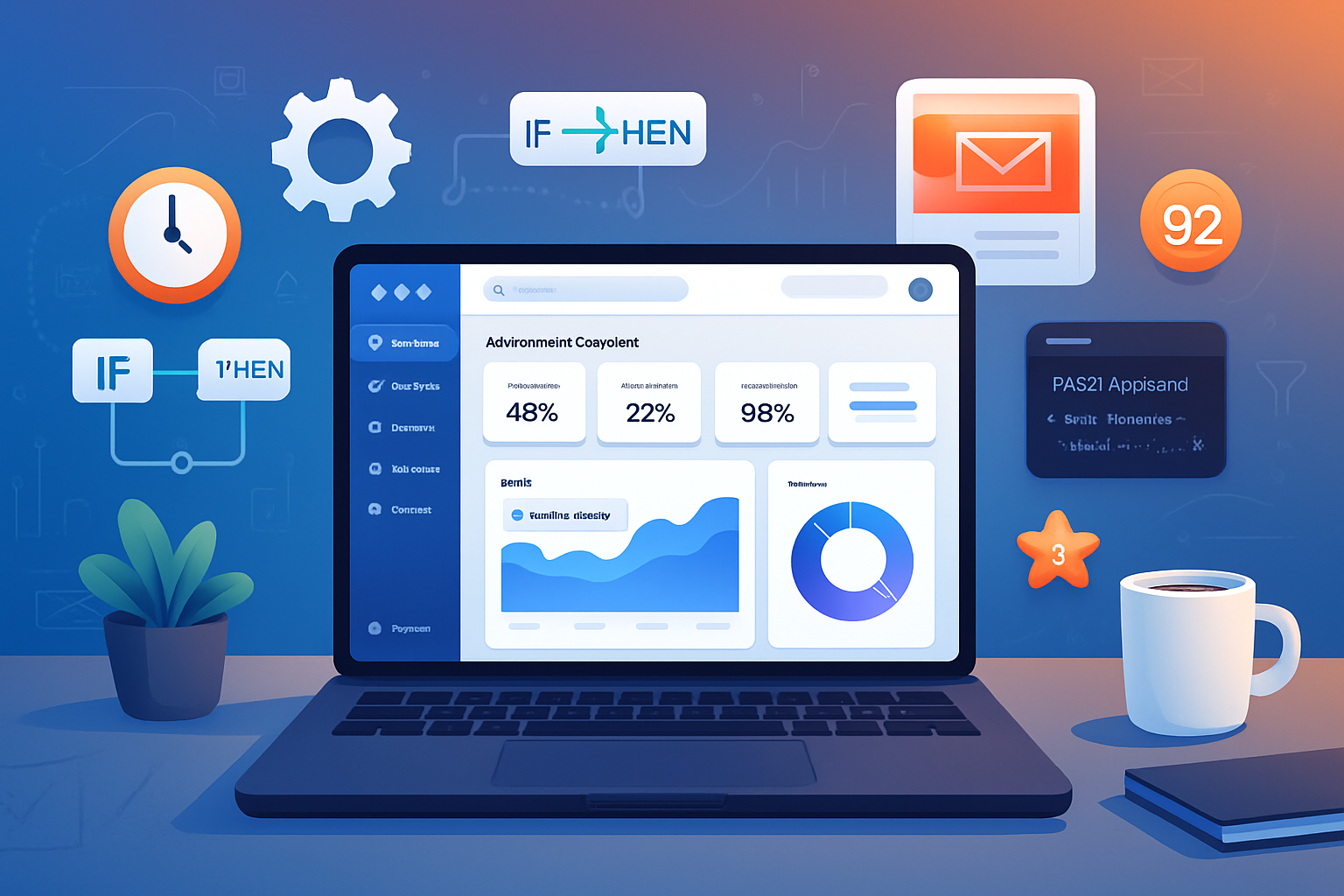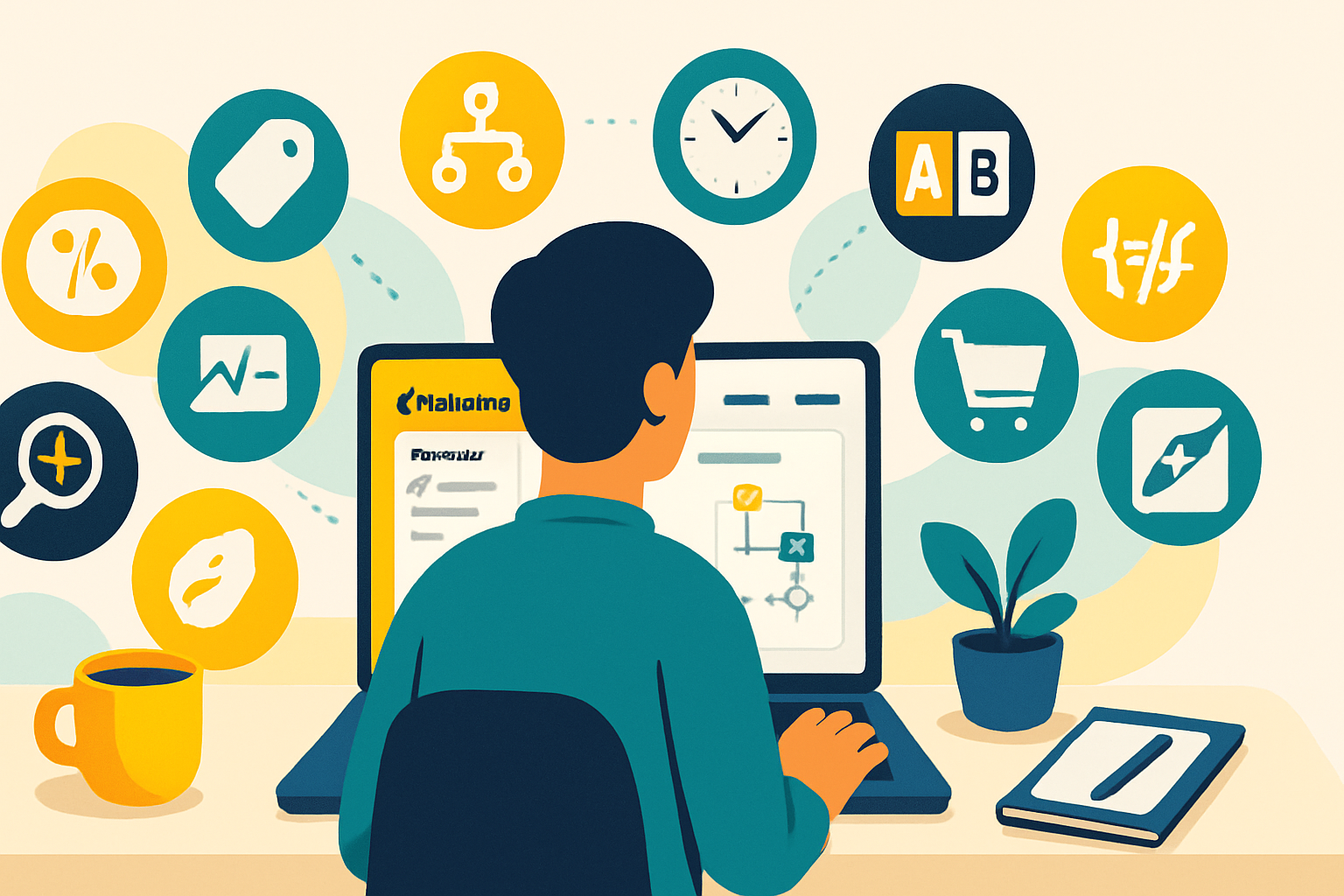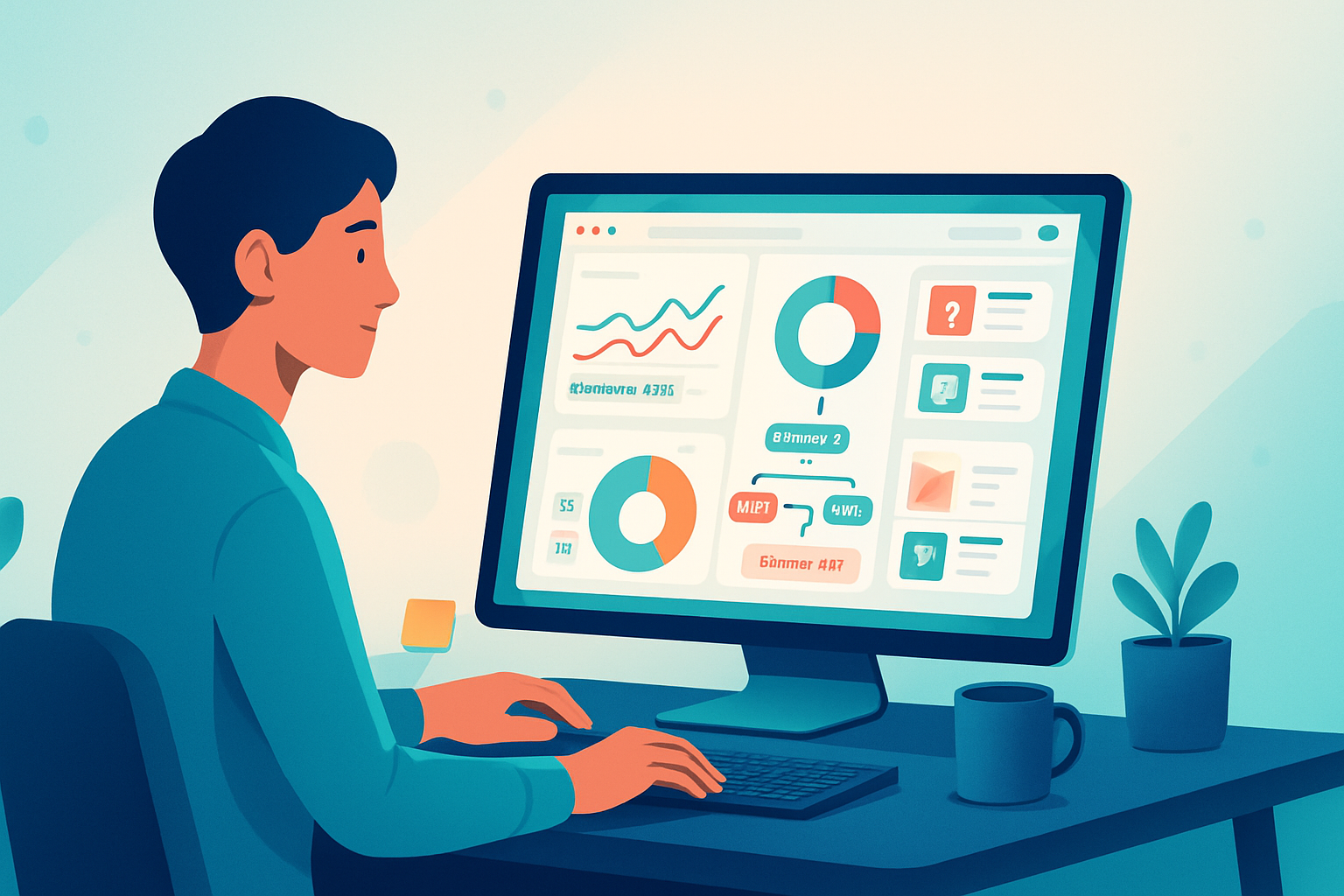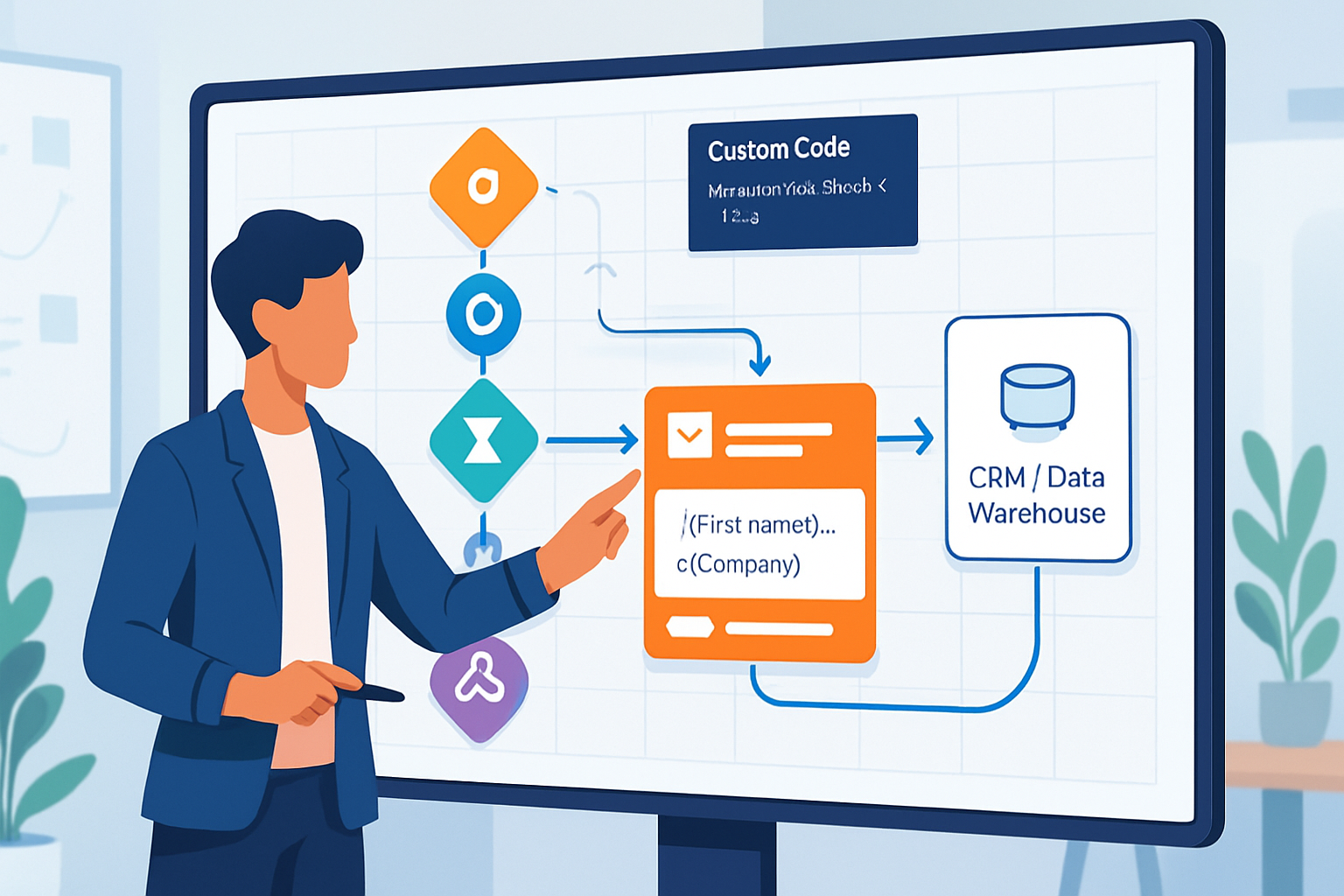· marketing · 7 min read
10 Hidden ActiveCampaign Features You Didn't Know Existed
Unlock powerful but lesser-known ActiveCampaign capabilities - from automation webhooks and Custom Objects to dynamic content, send-time optimization, and Conversations - with practical examples and setup tips to boost your email marketing efficiency.
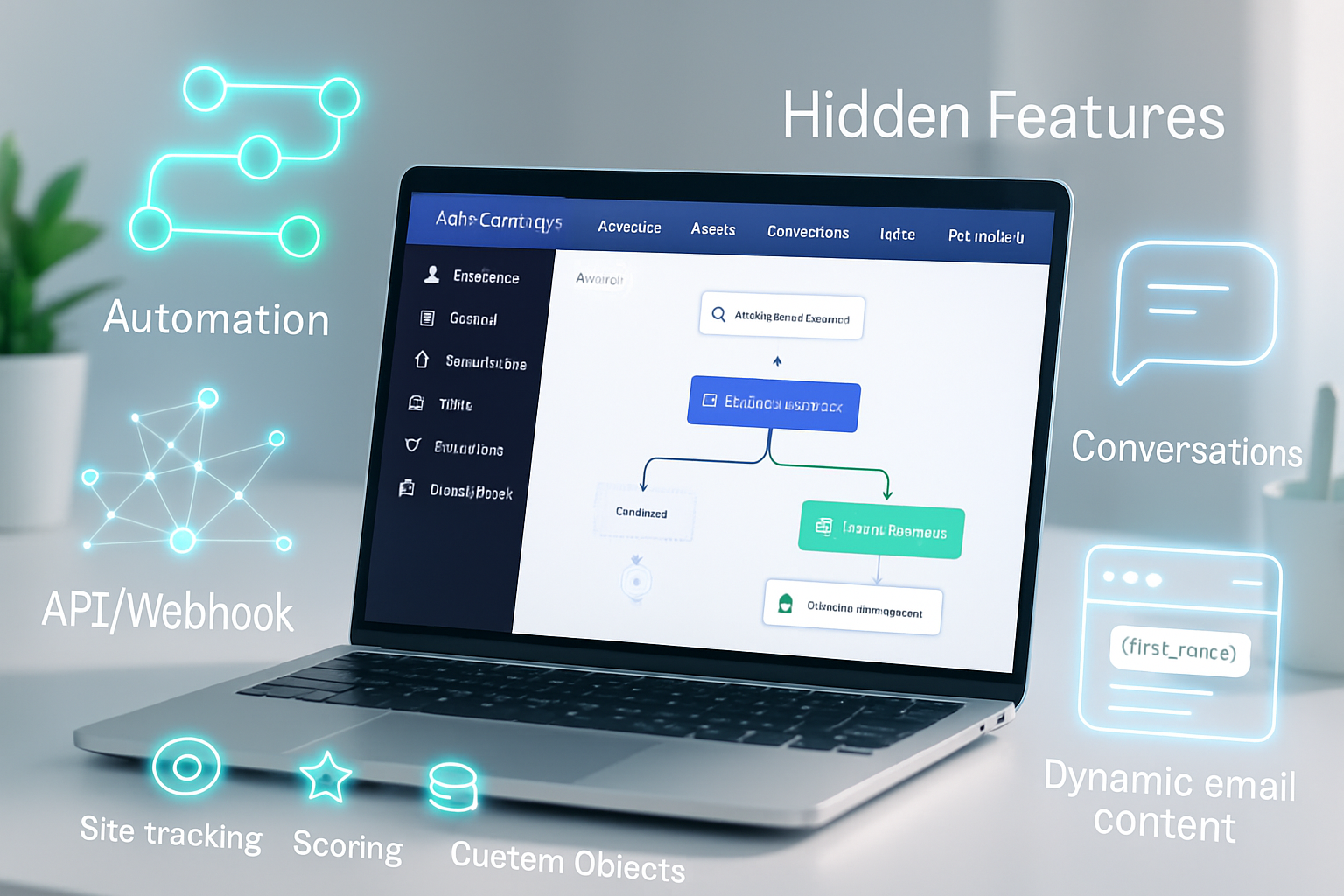
Introduction
ActiveCampaign is packed with features most marketers discover slowly over time. Beyond the obvious automations and campaigns, there are powerful - and sometimes underused - capabilities that can save time, improve personalization, and let you connect to external tools in elegant ways.
Below are 10 of those hidden or lesser-known features, why they matter, and how to put them to work today.
1) Send HTTP Request (Make API calls from Automations)
What it is
An automation action that lets you call external APIs directly from an ActiveCampaign automation flow. Think of it as a built-in webhook/HTTP client.
Why it matters
You can send data to other apps (internal services, Zapier Webhooks, analytics platforms) without building an external middleware. This reduces latency and keeps business logic inside your automation.
How to use it
- In the automation builder add the “Send HTTP Request” (or similarly named) action.
- Configure method (POST, GET, etc.), URL, headers (e.g., Authorization), and request body.
Example (cURL equivalent)
curl -X POST "https://your.api/endpoint" \
-H "Content-Type: application/json" \
-H "Authorization: Bearer YOUR_TOKEN" \
-d '{"email":"%EMAIL%","contact_id":"%CONTACTID%"}'Pro tip
Use personalization tags (like %EMAIL%) in the payload. For sensitive payloads use an endpoint behind authentication and IP restrictions.
Reference: https://help.activecampaign.com
2) Custom Objects - model data beyond contacts & deals
What it is
Custom Objects let you store and relate structured data (orders, subscriptions, tickets, memberships) to contacts and deals.
Why it matters
You can build marketing and automation logic around complex business data without shoehorning everything into fields. Trigger automations when a Custom Object is created or updated.
How to use it
- Create a custom object type (e.g., Order) in the Settings > Developer area.
- Map fields and import / push data via the API.
- Use custom-object-based triggers inside automations.
Use case
Trigger an email sequence when an Order’s status changes to “failed” and automatically notify CS with an HTTP request.
Reference: https://help.activecampaign.com/hc/en-us/articles/360050637913-Getting-started-with-Custom-Objects
3) Event Tracking (Custom events + Event-based automations)
What it is
Beyond pageviews, Event Tracking lets you push named events (e.g., “watched_video”, “downloaded_whitepaper”) to ActiveCampaign via a JS snippet or API.
Why it matters
You can trigger automations and scoring based on very specific user behaviors - not just emails and opens.
How to use it
- Add the ActiveCampaign tracking script to your site (Site Tracking).
- Fire a custom event using JS (or server-side API) including event name and metadata.
Example (JS)
<script>
_ac.push([
'trackEvent',
'watched_video',
{
title: 'How to scale',
seconds_watched: 98,
},
]);
</script>Pro tip
Include metadata (IDs, product SKUs) in the event so your automation can make precise decisions.
Reference: https://help.activecampaign.com/hc/en-us/articles/115001215853-Event-Tracking
4) Automation Goals - route people who already completed a desired action
What it is
A Goal is an automation element that ends or moves a contact down a different path when they meet a specific condition (a page view, a tag, a custom field value).
Why it matters
Goals prevent redundant messaging. If someone has already purchased or completed a demo, you can stop marketing automations for them or fast-track them to the next stage.
How to use it
- Add a Goal element to the automation map and define the goal condition.
- Decide whether hitting the goal removes the contact from the automation or moves them to a specific place.
Example
Use a “Demo Completed” tag as a goal; if the contact has it, skip the demo reminder steps and send a follow-up instead.
Reference: https://help.activecampaign.com/hc/en-us/articles/115000663667-Automation-goals
5) Deal Automations (CRM-first workflows)
What it is
Automations focused on deals allow you to trigger workflows when a deal is created, moved stages, won, or lost.
Why it matters
Bridge your sales process and marketing: automate task creation, lead nurture, SLA notifications, and post-sale onboarding tied to deal pipelines.
How to use it
- Create an automation with triggers like “Deal Stage changes” or “Deal created.”
- Use Deal actions - update deal fields, add notes, create tasks, or send emails.
Use case
When a deal hits “Proposal Sent,” automatically create a follow-up task for an AE after 2 days, and if no activity occurs, escalate via Slack using the HTTP Request action.
Reference: https://help.activecampaign.com/hc/en-us/articles/360001126094-Deal-automations
6) Global Content Blocks - design once, update everywhere
What it is
Reusable blocks that you can insert into any campaign or automation email. Update the global block once and all emails that reference it update automatically.
Why it matters
Perfect for footers, disclaimers, promo banners, or legal text - keeps content consistent and speeds updates.
How to use it
- In the email designer, create and save a Global Content Block.
- Insert the block into any template or campaign.
Pro tip
Combine a Global Block for the footer with dynamic content inside it (e.g., country-specific support links) for both consistency and localization.
Reference: https://help.activecampaign.com
7) Conditional / Dynamic Content inside emails
What it is
Display different content blocks within the same email to different contacts based on contact fields, tags, or custom object data.
Why it matters
You maintain a single campaign but deliver tailored messaging to segments - increases relevance without multiplying campaigns.
How to use it
- In the email designer choose a content block > Conditional Content.
- Set rules (tag exists, custom field equals, etc.) and provide the alternative content.
Example
Show a “Renew Now” CTA if subscription_expires_in_days <= 30; otherwise show educational content.
8) Send Time Optimization / Predictive Sending
What it is
A machine-learning feature that predicts the best time to send an email to each contact (or a clustered best time) for higher open rates.
Why it matters
Automates one of the most time-consuming optimizations - timing - and can materially improve engagement.
How to use it
- Choose Send Time Optimization or Predictive Sending when scheduling a campaign (availability depends on your plan).
- ActiveCampaign will determine send windows based on historical behavior.
Caveat
This is typically available on higher-tier plans. Evaluate against your own time-based business needs (e.g., limited-time offers may need a single scheduled send).
Reference: https://help.activecampaign.com
9) Lead Scoring + “Adjust Lead Score” automation actions
What it is
Automated, rule-based scoring that increments or decrements a contact’s score as they interact with you.
Why it matters
Score-driven automations help prioritize outreach (e.g., sales pings) and can be used to trigger lifecycle actions when a threshold is reached.
How to use it
- Define scoring rules in the Lead Scoring area (e.g., +10 for demo request).
- Use the “Adjust Lead Score” automation action to change scores in response to events that aren’t captured by static rules.
Example
If a contact attends a webinar (Event Tracking), add +20 points via an automation and if the score hits > 80, create a deal and notify the AE.
Reference: https://help.activecampaign.com/hc/en-us/articles/115000045403-Lead-scoring
10) Conversations (Live Chat + Shared Inbox)
What it is
A built-in chat widget and shared inbox product that captures chat, email, and messaging threads tied to contacts.
Why it matters
It centralizes conversation history and can feed data back into automations (e.g., create a follow-up automation when a high-value lead starts a chat).
How to use it
- Enable Conversations in the product and configure the chat widget and routing rules.
- Route chats into automations by tagging contacts or creating deals/tasks when certain phrases or behaviors happen.
Use case
A chat visitor asks pricing: tag them with “pricing_inquiry” and start a short automation that sends a pricing overview and schedules a call.
Reference: https://help.activecampaign.com
Bonus: Small features with big impact
- Resend to Unopens - clone a campaign and send only to those who didn’t open earlier with a refreshed subject line.
- Automation “Wait for” vs “Wait until” - use advanced waits to pause until a precise condition is met (e.g., field value changes).
- Asset reporting & tracking links - append UTM parameters dynamically with personalization tags to improve attribution.
Conclusion
ActiveCampaign is more than an email sender - it’s a platform that can centralize customer data, run CRM-grade automations, and integrate tightly with the rest of your stack. Start by identifying a single high-value use (e.g., pushing custom events or using Send HTTP Request to connect an internal tool), implement it, and measure lift. Many of the features above are available by plan - check your account level before implementing.
Resources
- ActiveCampaign Help Center: https://help.activecampaign.com
